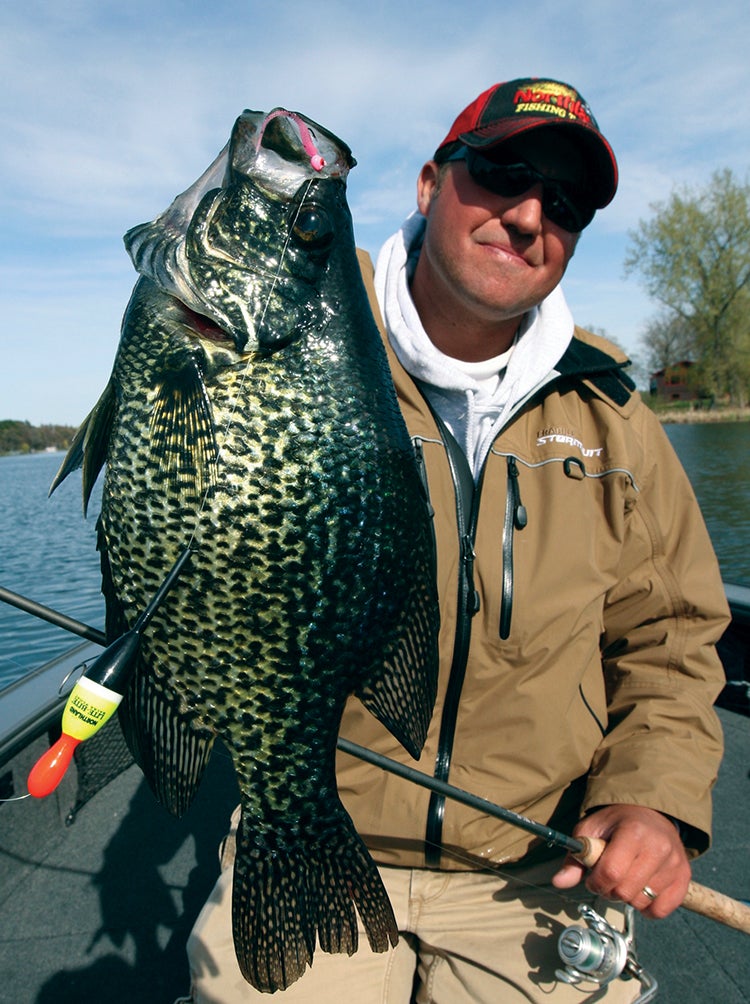Riege: Myths About Hookin’ and Cookin’
Published 8:46 pm Tuesday, March 19, 2013
By Bob and Ginny Riege
It has often been said that the first fish to spawn is the Crappie. Just the other day, I was talking to some friends of mine and they were wondering if I was going to fish the spawning Crappies. It seems as though everyone is starting to focus on this first open water opportunity, myself included. When I heard these the word mention “spawn” I cringed. A bit more of the conversation told me that this anglers still did not understand the ice out shallow water movement that is made by sunnies and crappies. It also reaffirms my belief that the “spawning myth” is still alive and swimming.
It amazes me how ancient fishing concept has such a hard time dying. The spawning myth was started long ago and despite all of the articles written about this myth it remains a tough nut to crack. If anglers would accept the facts of this early season movement, they would have more success fishing early season panfish because they would understand what the fish are looking for.
It is true that panfish spawn in the spring, but it is very late spring into early summer. Crappies spawn in water that has reached the mid sixties and sunfish spawn in water even warmer than that. Just because they are full of eggs when you catch them in the shallows doesn’t mean that they re in the shallows to spawn.
So now we arrive at the question that everyone asks. If the panfish are not spawning, just what are they doing in the shallow water? This answer is simple, they are looking for food.
The whole food concept, however, is not so simple. This food concept has to do with muck dirty water, weeds, sun, water temperature, water depth, and wind direction. All of these factors are somewhat interrelated. In order to understand the relationship between these factors we need to first examine some food chain basics.
The whole movement of panfish into shallow water starts with the zooplankton and other minute creatures that become active in warm water. The increased activity by level of these small organisms spark increased activity by larger insect larva that preys on them. It is these insect larvae that become the food for the panfish.
Once you understand exactly what the food source id for the panfish you can start to pick out areas that will offer the best habitat for this food. This is where shallow, mucky bays come in. Muck brings several of the key factors together that attract fish.
Muck creates a dark bottom that will absorb sunlight and heat faster than surrounding water. It also is a haven for insect larvae and zooplankton. Muck is their home, not clean sand. Muck is also the source of the tiny particles that suspend in the water to reduce clarity.
Spring weather is very fickle. One day it is nice and the next it is cold. Panfish react to this weather change. It is very common to find fish stacked up in a bay one day and catch nothing the next.
Shallow water warms very fast but cools equally as fast. It is possible to have water in a quiet, dark bottomed bay five to ten degrees warmer than the rest of the lake. Wind blowing into this bay from the main lake will quickly cool off the water in the bay. Wind direction can be a critical factor in success.
Understanding exactly why panfish are moving into the shallows is really the only way to become adept at finding them during this time of the year. You also need to remember that panfish are great roamers in early spring. Just because they are in an area one day does not mean they will be there the next. Fishing a lake with several bay areas increases your chances of finding one that has the ideal conditions.
As for the ice out spawning myth, I am sure I will hear more about it again this year. It won’t be until this myth dies out that anglers will be able to maximize the ice out opportunities that a lake has to offer.
Once you get a mess of fish how are you going to cook them? I like a hot skillet with a lot of canola oil and dust them with a little Clam Outdoors Goose Antler Lodge in Zesty Lemon dill, dust to crisp them up as they fry. If you are a beer batter person a small amount to beer to the “Zesty Lemon Dill” dust will give you a coating that is excellent. So are you hungry yet? I know I am for some fresh fish.
If you’re not an ice-angler, you probably haven’t had a fresh supper for several months. Now’s the time to change that and there are loads of panfish in the shallows just waiting for you to show up.




